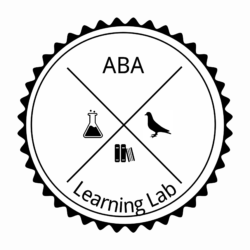James Macon, M.Ed., BCBA
“The rat is never wrong” is a phrase which may sound strange to most folk, but not to those working in the field of behavior analysis.
It’s derived from the “skinner box,” (aka an operant chamber), an apparatus used in basic behavioral research where an animal (usually a mouse or pigeon) is placed in an isolated container, usually with a lever present, and must use that lever to earn rewards or avoid certain outcomes.
Researchers use the skinner box because it can easily isolate and control different types of variables. If the mouse failed to perform a certain behavior that the researcher was trying to shape, it wasn’t because the mouse was stupid, slow, lazy, or a “bad mouse” … rather it was the researchers fault for failing to systematically engineer and reinforce that behavior. Hence, the rat is never wrong.
The same phrase can be extended to include people, be it a young child with autism, a staff working with that child, or someone in a completely different field . To modernize the phrase, we’ll say the performer is never wrong. We’ll go a step further and say the performer is usually never wrong; more on that later.
As behavior analysts, we’re usually pretty quick to defend a clients inappropriate behavior as a function of environment and learning history. We analyze the function, and we engineer better behavior. Unfortunately, we often fall short when it comes to analyzing our staff’s behavior with the same rigor.
When performance problems occur or persist, staff are often blamed as being stupid, slow, lazy, or a bad employee. Not discounting that there will be bad employees, many performance issues can be prevented or resolved if the environment is engineered to promote exemplary performance. If it isn’t engineered to promote exemplary performance, there will likely be a disconnect in the system somewhere. The point? Put a good employee in a bad system, and the bad system will win every time.
Luckily, Organizational Behavior Management (OBM) provides some useful assessment tools to assist with this. One tool is the Behavior Engineer Model (BEM), described in Thomas Gilbert’s seminal book Human Competence: Engineering Worthy Performance. While there have been several significant adaptations to this model, including the Performance Diagnostic Checklist (PDC) and the Performance Diagnostic Checklist – Human Services (PDC-HS), we’ll be looking Gilbert’s model.
Gilbert was a pioneer in OBM and performance engineering, and even spent a year post doctorate studying with B.F. Skinner at Harvard. Thomas described behavior as a function of a persons’ repertoire and his environment, and designed his model to analyze those 2 categories across the typical antecedent, behavior, consequence (ABC) model used elsewhere in the field. Instead of just ABC though, he labeled them “Information,” “instrumentation” (needed for behavior), and “motivation” (i.e., consequences). He also analyzed these across the individual, and the environment (see Figure 1 below).
Behavior Engineering Model
| Information | Instrumentation | Motivation | |
| (Env) | Data
|
Resources
|
Incentives
|
| (Ind) | Knowledge
|
Capacity
|
Motives
|
Figure 1. Thomas Gilbert’s Behavior Engineer Model.
In both a sobering and comical way, Gilbert does have a behavior model for creating incompetence. The models relevance as a diagnostic tool is evident upon examination, as shown in Figure 2. Chances are you’ve probably worked for a place in the past where the environmental or individual contingencies did not provide for exemplary performance. A system like this can be very frustrating to work in. Check the area below, and contrast them with the Behavior Engineering Model to see how you are doing.
Model for Creating Incompetence
| Information | Instrumentation | Motivation | |
| (Env) | Data
|
Resources
|
Incentives
|
| (Ind) | Knowledge
|
Capacity
Schedule performance for times when people are not at their sharpest Select people for tasks they have intrinsic difficulties performing Do not provide response aids |
Motives
|
Figure 2. Model for creating incompetence
If you want to engineer poor performers, follow the Model for Creating Incompetence. If however you want happy, productive employees, use the Behavior Engineer Model. Below is a summary of its components.
The Environment
Information
A good system will have relevant information/data that will act as an SD or prompt for the desired performance. It should also layout very clear expectations, and provide regular feedback opportunities. Not having this information would be comparable to having to build a Lego set in the dark, without instructions. Could it be done? Maybe. But it would be terribly inefficient and frustrating for all involved.
Instrumentation
If someone is expected to perform in a certain way, they should have the right instrumentation and tools to do the job. If a carpenter is expected to build a home, they would need certain resources and equipment to do the job. No one would expect a home to be built without nails and hammer. And if you’re a behavior technician, you similarly couldn’t do your job if you didn’t have programs and data sheets.
Motivation
Motivation and incentive are in an important part of any successful system. It’s naïve however to think that financial incentives alone are sufficient. A system should provide non-monetary incentives and career development opportunities for their staff, both of which can often be more powerful than the financial incentives. There should also be very clear consequences for poor performance. As described, this allows for both positive and negative reinforcement contingencies to control behavior.
The Individual
Knowledge
Knowing how to do the job you are hired for is obviously critical. What can often be overlooked is how well training prepares you for your actual job duties. The point here is that actual job requirements and duties may look vastly different from a job description and what’s covered in training class. Individuals should receive training that matches the job requirements and duties of a top performer.
Another variable to consider for the individual is whether they’ve applied and been placed in the job that suits them and the organization best. To look an example from the ABA field, some times individuals who are highly competent, with decades of comparable work experience will apply for a behavioral technician position. Sounds perfect, right? Except they might have a blown-out knee and can’t bend down to the floor. There’s probably a better job placement for them within the organization, because they will most likely not be able to work with an active child.
Capacity
Does the person have the capacity for the job? If so, are we setting them up for success? Are we scheduling their shifts at optimal times? Are we ensuring the tasks given are within their capacity, and not intrinsically difficult? Are we providing visual aids and other stimuli to help ensure performance is optimal? If not, we maybe setting someone up for failure. The idea here to make the behavior efficient and simple for the employee.
Motives
Virtually all new employees joining a company want to do a good job and please their bosses and clients. People, by and large, are well intentioned. It is still important to know a persons motives though. If someone is looking for a short term employment versus a long-term career, it is vital to know that level of detail. Are they interested in pursing further education? Are they willing to work hard for a paycheck and bonus? Without asking, you can’t have a complete picture of what will motivate that employee.
Wrapping it up
No one really wants to engineer bad performance or incompetent behavior. It’s just something that happens when a system doesn’t analyze all the relevant contingencies responsible for behavior. The good news of course is behavioral science has given us different models, such as the Behavior Engineer Model, to follow for better for performance and happier, more efficient employees.
References
- Gilbert T. F. Human competence. New York: McGraw-Hill; 1978.

